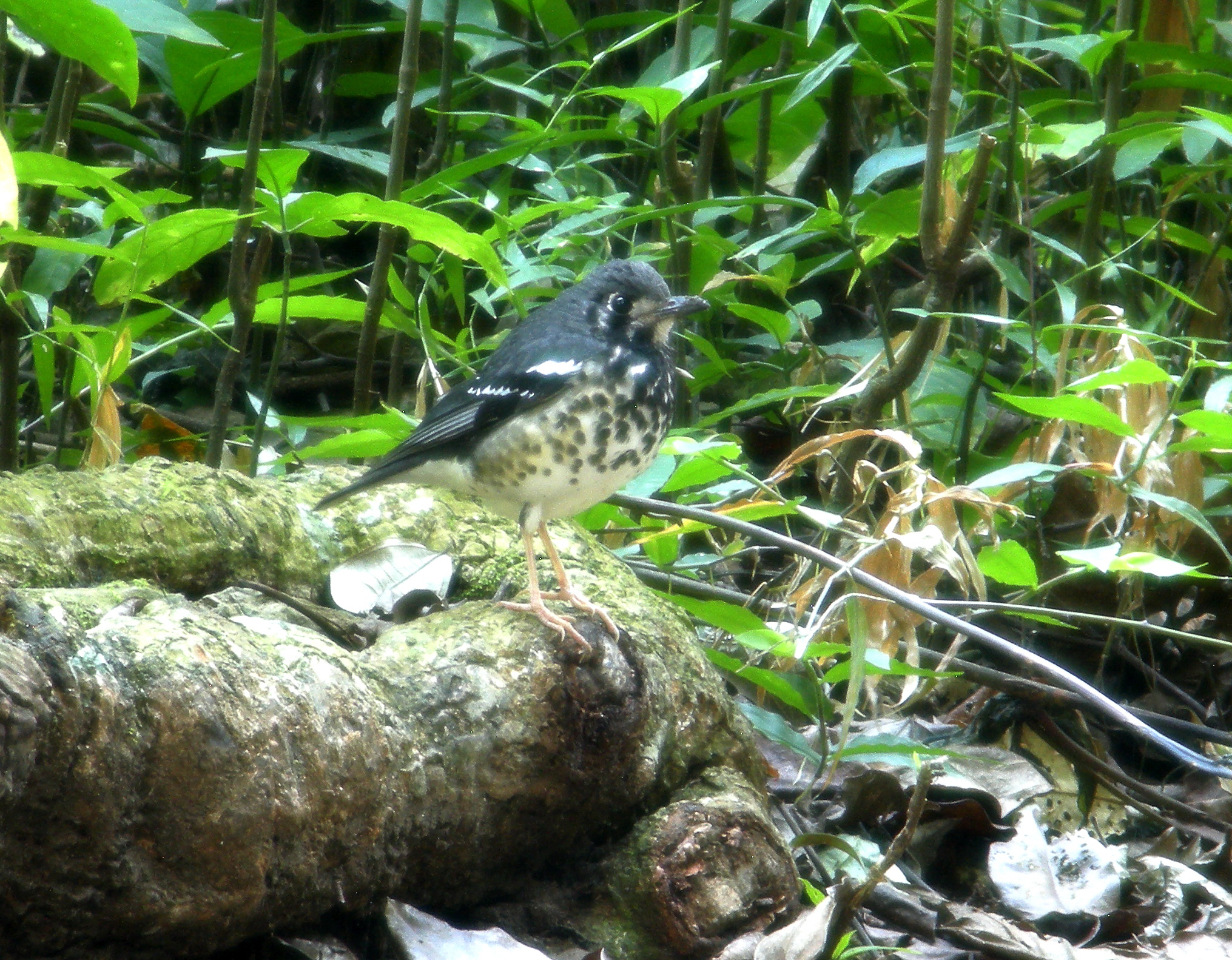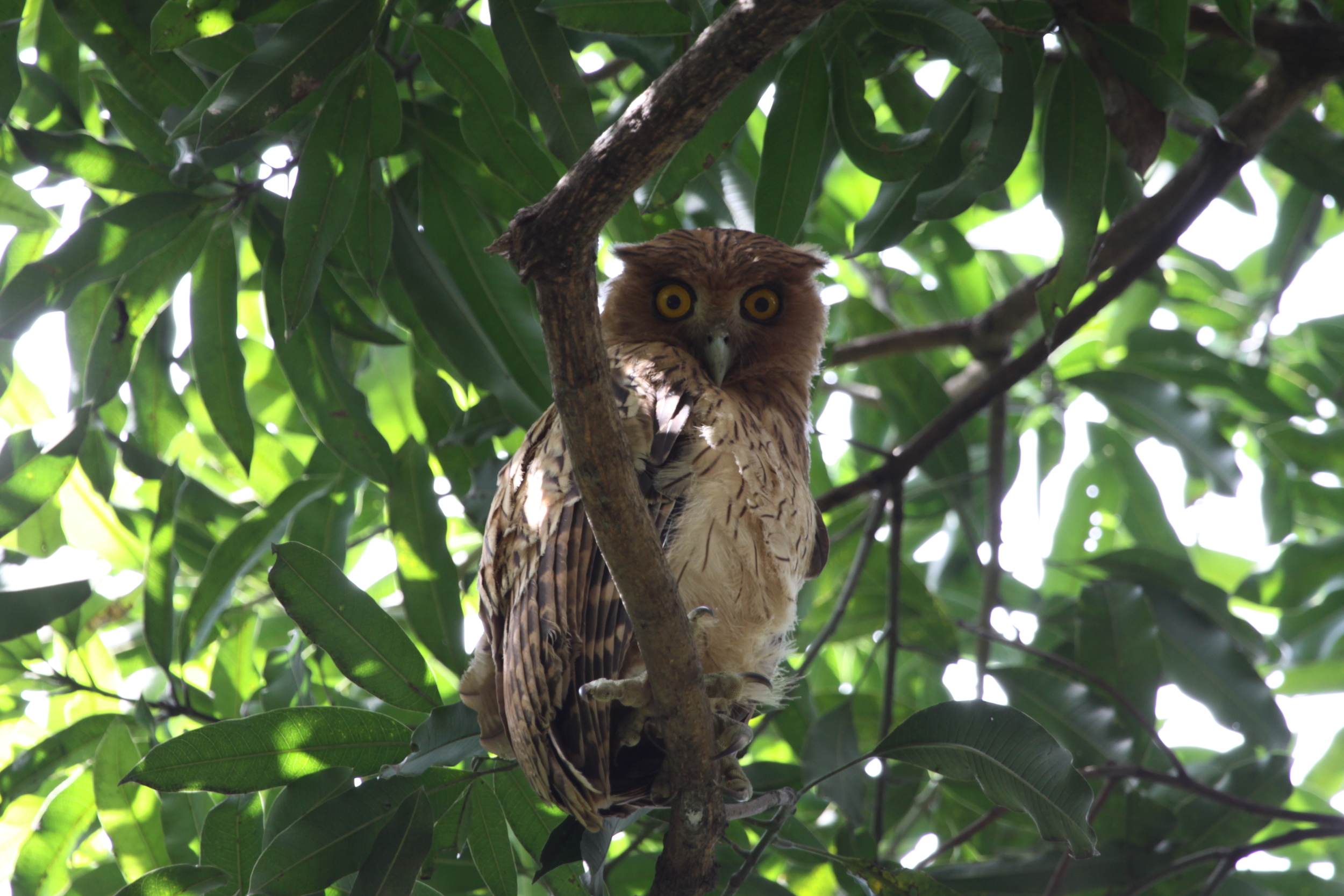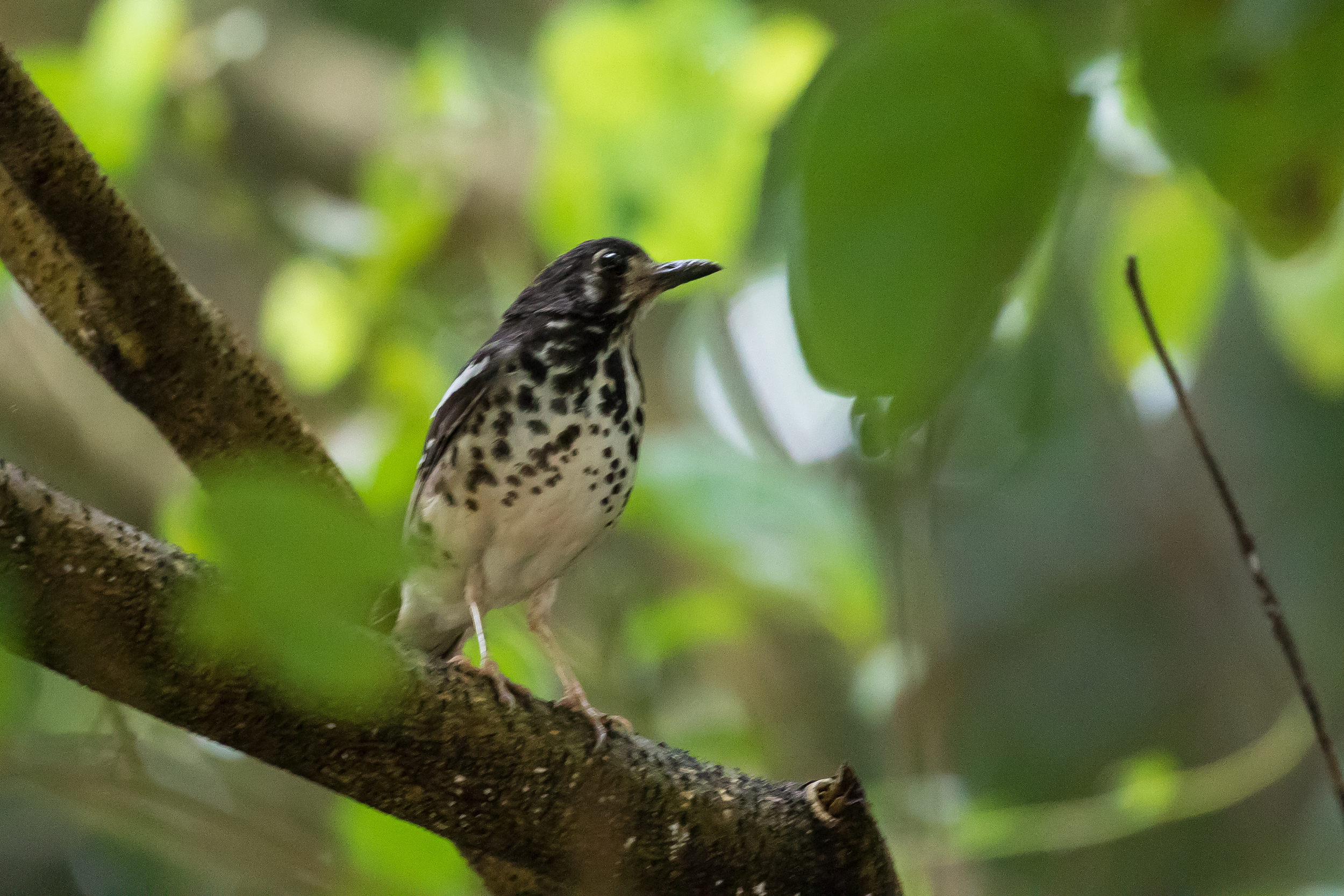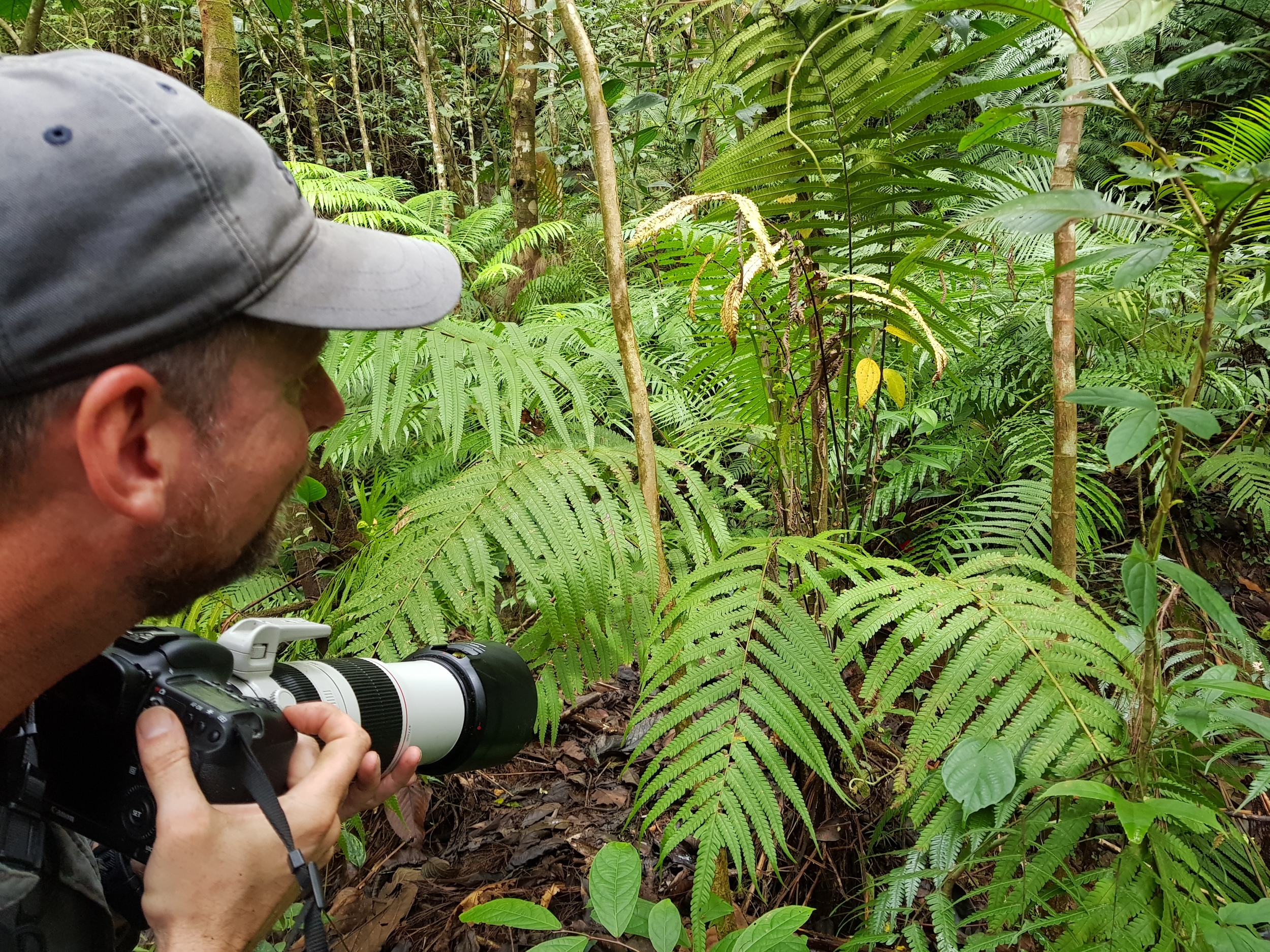A cheeky trip to Luzon…
I’ve been to the Philippines 3 times, so I’ll start this blog-post with some flashbacks to set the scene. My first trip was a 2-week, dedicated birding trip with Birdtour Asia in 2010 (my trip report here). We had a great trip but did miss some important species, mostly because of logistical issues and poor weather. These included a few night birds and three iconic forest birds that had been on our most-wanted lists: Mindanao Wattled Broadbill, Celestial Monarch and Falcated Ground-babbler.
In March 2013 I found myself in Singapore with 2 days to kill, and somewhat spur-of-the-moment I decided on a slightly mad day-twitch to Manila using cheap Cebu Pacific flights. Between 2010 and 2013 new sites had been discovered close to the Philippine capital that opened up some tricky species; I was gripped off by a series of posts from tour groups and individuals seeing Philippine Eagle Owl (PEO), a bird previously only jagged by very few. Now a pair was breeding at a publicly accessible site SE of the city which was do-able in a day trip. In addition, a new site — La Mesa Ecopark — offered great photo opportunities for otherwise difficult species like Ashy Thrush, Philippine Pitta and Hooded Pitta. In 2010 Ashy Thrush had been our bird-of-the-trip because of its then rarity value, the fact that many groups miss it, and the fact that in getting it we sacrificed a day on Palawan and hence chances at other great birds like Philippine Cockatoo and Mantanani Scops. Steve Young had taken an amazing picture in the early morning gloom on Mt Makiling using a 7-second exposure (yes, seven seconds) that was at the time among the best pictures taken of this crepuscular zoothera.

Ashy Thrush’s availability in La Mesa was therefore somewhat bitter-sweet; on one hand I might be able to get a good photo myself, but its rarity value was now considerably diminished since every Tom, Dick and Harry was now seeing it easily in the suburban park.
I flew late evening, staying with BTA boss Rob Hutchinson. Early morning we set out with fellow Manila local Irene Dy. Before dawn we bagged Philippine Scops Owl that was known from a local’s front yard, then headed to La Mesa. I managed great encounters with the park specialties:



Late morning I left Rob at the park and hopped in a pre-arranged cab which I directed via google maps to a place called Angono. Angono is a site of historic significance in the Philippines because of the presence of a set of petroglyphs: rock carvings dating from 2000BC, the oldest known art in the country. In 2013 it was also discovered to be the site of a pair of Philippine Eagle Owls.
I arrived at the site which is some 40-50km from downtown Manila and seemingly in the middle of nowhere. I walked though a seedy tunnel (hoping my taxi would be good to his word and wait for me, as arranged) and emerged to an area dominated by a shallow cave under a limestone cliff-face. A boardwalk skirts the base of the cliff and allows one to view the art-work without damaging it. In contrast to the usual tourists, I was looking up and not down. With a little help from one of the local caretakers I soon located a gorgeous and nearly fully-fledged Philippine Eagle-owl chick.

A year later in 2014 Steve Young and I irrationally decided to return to the Philippines to scratch the itches left by our 2010 dips. This time we tacked on a few days in Thailand beforehand (so Steve could grip back Spoon-billed Sandpiper, another of my cheeky conference ticks), and had a largely independent trip, birding just the two of us, or with local guides on occasions. For the first leg of the trip to PICOP, we joined forces with Irene (with whom I had stayed in touch via facebook) and two other birders, hoping to rectify our Celestial Monarch and Broadbill dips. We scored the Monarch and a bonus of the rarely encountered Mindano Bleeding-heart, but dipped again on the Broadbill (therein also lies a tale, which I shan’t bore you with now). Steve and I then set out on our own for a day at Angono (Steve keen for the grip back of PEO) and thence to Palawan where we cleaned up missing stuff from our 2010 trip, including Grey Imperial Pigeon, Mantanani Scops, Spotted Wood-owl, Palawan Scops, Philippine Cockatoo and the Falcated one.



Fast forward to 2019 and the real purpose of this blog post: to describe my fourth and most recent trip. Since even before my 2014 reprise I had been wondering about some of the iconic birds on Luzon that were not available on our 2010 and 2014 itineraries. Many trips to Luzon take in Mt Polis where one of the stars is the stunning Flame-breasted Fruit-dove, but our compressed trips did not have time for this site, several hours’ drive north of Manila. Even more remote are the northern peaks of the Sierra Madre where an endemic but oh-so-good-looking skulker dwells — Whiskered Pitta. To get there involves a flight to Tuguegarao and then a two day hike on a steep, muddy mountain forest trail, camping along the way. Quite the adventure, and often part of “Remote Philippines” tours, but also needing the best part of a week, which I found hard to justify even to myself, let alone Nikki and the girls.
Then, around 2016 I started seeing pictures of Whiskered Pitta that seemed to be from closer to Manila. What was going on? Turns out, a photographer discovered a new area at the southern edge of the Sierra Madre range, a mere 2-3 hours from Manila, holding many of those stonkers. Suddenly a weekend twitch to rival my PEO trip was in the frame.
It took quite a while for me to set it up, but I finally decided earlier this year that 2019 would be the year. With no foreign birding lined up, but at least 2-3 work trips to Guangzhou in China planned (a mere 1h45 flight from Manila), I contacted Irene to see if she’d be available to assist me one weekend. We initially aimed for April, but a week or two beforehand she contacted me with the news that the pitta at her usual site had recently become very tricky, possibly because it was breeding. Rather than risk disturbance to the bird and/or a major dip, we decided to reschedule. I strategically set up my second China trip of the year for September, tacked 2 days onto the end of that for a cheeky Manila stopover on my way home, and kept my fingers crossed that the weather would be ok.
After an intense few days of work in Guangzhou, Shanghai and Hangzhou I was bound for Manila late Thursday night. Irene had suggested I stay in a hotel near the airport, and having arrived at 11.30 it was after midnight before I could try to grab 40 winks in the rather down-market but exceedingly cheap hotel we’d agreed upon. In the noise of this huge, chaotic city of 30m people I managed an hour or two of shut-eye, despite the honking horns, powerful diesel engines of jeepneys growling, and fellow hotel guests slamming doors and shouting at each other. Irene was picking me up in 4 hours so it hardly mattered anyway. By 4.15 we were on our way to the east, grabbing fuel, coffee, breakfast and some weekend supplies en route.
By 7am we’d cleared the city and begun a slow ascent to the better forest. Irene pulled over on the side of the road and wound the car windows down — I am not sure if this was on spec or if she knew the site — and within seconds announced she could hear Ashy Thrush singing. Sure enough we found two birds that showed brilliantly for several minutes. My camera was still tucked away in my bag, but eventually I realised I should try to grab at least a record shot. In the end I failed to sort out my settings properly, and this is all I managed.

We carried on up the hill, noting first roadside Plain Bush-hen and very shortly afterwards a Barred Rail. For this I jumped out of the car to grab a photo but only managed one as it ducked into cover. This was unfortunate because, as I discovered later that night when checking my list, it was a lifer! As we made out way up to the best birding area we also noted a Brown-breasted Kingfisher on an electricity wire (when I first saw this in Mindanao in 2010 it was lumped with White-throated, but subsequently became a Philippine endemic), numerous Brown Shrikes (and occasional Long-tailed Shrikes too) and a Philippine Serpent Eagle on a pylon. We would see and hear this beautiful and impressive but relatively common raptor regularly over the next 2.5 days. At one scenic lookout we stopped and I noted Hill Myna, Coleto, White-breasted Woodswallow, Large-billed Crow, Grey-rumped Swiftlet and Ridge-top Swiftlet (a split from Glossy Swiftlet). The latter two would be common companions for the next 2 days, even in poor weather.
We arrived in the prime birding area around 7.30. Views either side of he road both up and down the mountain revealed the largely pristine forest, the best I have ever seen in this country where deforestation reaches epidemic proportions. Our first stop we immediately heard a low monosyllabic boom of a Flame-breasted Fruit-dove. We waited around for 15-20 minutes in the hope it would show itself. A few Rufous Hornbill called as well, but anxious not to eat into prime pitta-spotting time, we gave up on both the Fruit-dove and Hornbills and carried on to a new spot.
The road is flanked by steep, muddy, forested banks, but undeterred, Irene clamboured effortlessly about 30-40m into the forest, and I followed tentatively. I regretted using the hotel gym in China a few days earlier, because I had pulled up stiff after my treadmill run, and now struggled to keep up with her, worrying that I would pull one of my overly tense hamstrings!
Once a bit deeper into the forest Irene played the call of Whiskered Pitta once or twice. Excitingly, it was answered, but seemed to be distance away. Rather than persist with playback to try to bring it closer, we retreated to the road, walked about 100m, and then headed back in. Incredibly within seconds and without any playback Irene excitedly called “Pitta”. I froze, then peered in the direction she was pointing. A small red glow hovered above the forest floor and when I raised bins I got my first glimpse of a fantastic Whiskered Pitta. Initially it kept well hidden away from camera lenses, but made a couple of forays from cover that had us foxed with its behaviour: it would fly up a metre or two to a large patch of dead leaves, try hopelessly to hover, then plummet back down. We wondered what it was doing — maybe there were grubs on the leaves it wanted to shake to the ground where it would be easier to feed on them? Perhaps it was having a crisis of identity and thought it was a hummingbird?

We waited patiently with the bird for some time and it treated us to some truly magical moments. It was presumably aware of our presence, but with the cover of the ferns was happy to approach us quite close; a particular highlight was watching it call gently from barely 2m in front of me as Irene videoed and photographed me with the bird.

Although we had “walk-way views”, in fact we waited until it naturally moved away from us before leaving to avoid disturbing it. First morning and we’d nailed my #1 target already. The twitch was already a great success.



Some roadside birding yielded a few mixed flocks that included Lowland and Yellowish White-eye (the latter a lifer), Elegant Tit, Blue-headed Fantail, Arctic Warbler and Yellow-throated Leaf Warbler, Olive-backed, Pygmy and Buzzing Flowerpeckers, and ubiquitous Philippine Bulbuls. Before lunch we called in at another spot where a private garden has numerous flowers attractive to sunbirds. Irene comes here regularly and knows many of the locals — she sought out the owner, who, seeing it was her, was very happy for us to do a spot of birding in his garden. Several sunbirds buzzed around the garden including Flaming Sunbird but also a lifer Luzon Sunbird.





After lunch in a local restaurant we made out way up to the very pleasant house that Irene had booked for us for two nights. As we arrived it started to rain, so we unloaded our luggage and I napped for a couple of hours, grateful to recover after so little sleep over the last two days. There was more birding to come later in the day, and for another day and a half afterwards, but that will have to wait for Part 2…

1 Comment
Comments are closed.